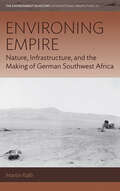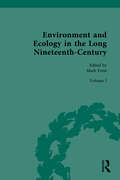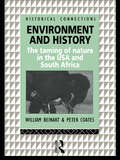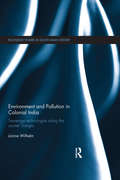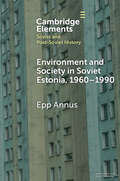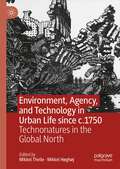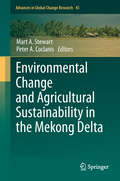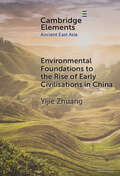- Table View
- List View
Enveloped Lives: Caring and Relating in Lithuanian Health Care
by Rima PraspaliauskieneHanding envelopes containing money or gifts to doctors in public health care is often seen as a remnant of socialism that continues as an integral part of the Lithuanian health care system. Rima Praspaliauskiene uses the envelope to explore complex doctor-patient interactions that go beyond notions of the gift or the bribe. She reshapes our definition of corruption and encourages seeing these practices as emerging forms of care that impede the neoliberal health care reforms effected in the post-Soviet era. Enveloped Lives extends the analytical categories of gift, care, money, and transparency, shifting attention away from material transactions by prioritizing relations and practices that transcend economic rationality. At a time when health care reforms and the costs of care are being widely debated, this book is a contribution to the larger discussion about the ethics and future of health care around the world.
Envenenado en Cardington Crescent (Inspector Thomas Pitt #Volumen 8)
by Anne PerryLa investigación de la muerte de un pariente muy cercano supondrá una dura prueba para el inspector Pitt. La octava novela de la serie del inspector Pitt El crimen se ha vuelto a apropiar de los elegantes barrios londinenses y el inspector Pitt se ve obligado a intervenir. Sin embargo, en esta ocasión se trata de un asesinato particularmente doloroso para el inefable inspector y su perspicaz esposa Charlotte, ya que la víctima es el esposo de Emily, la querida hermana de Charlotte. Pero la tragedia no acaba ahí, ya que a continuación se produce otra muerte en extrañas circunstancias...
Envidia (Latidos #Volumen 3)
by Anna GodbersenMentiras, secretos y pasiones prohibidas en la ciudad de Nueva York. La alta sociedad de Manhattan espera los primeros días de primavera entre fiestas, cócteles y recepciones. Tras su precipitado retorno, Elizabeth Holland todavía no ha aparecido en ninguno de estos eventos sociales, pero ahora las miradas curiosas tienen un nuevo objetivo en el que posarse: los recién casados Henry Schoonmaker y Penélope Hayes. La flamante pareja es la envidia de toda Nueva York y parece tener todo lo que se puede desear: dinero, belleza, felicidad. Aunque, en ocasiones, las sonrisas más deslumbrantes esconden los secretos más escandalosos...
Environing Empire: Nature, Infrastructure and the Making of German Southwest Africa (Environment in History: International Perspectives #23)
by Martin KalbEven leaving aside the vast death and suffering that it wrought on indigenous populations, German ambitions to transform Southwest Africa in the early part of the twentieth century were futile for most. For years colonists wrestled ocean waters, desert landscapes, and widespread aridity as they tried to reach inland in their effort of turning outwardly barren lands into a profitable settler colony. In his innovative environmental history, Martin Kalb outlines the development of the colony up to World War I, deconstructing the common settler narrative, all to reveal the importance of natural forces and the Kaisereich’s everyday violence.
Environment and Ecology in the Long Nineteenth-Century
by Mark FrostThis first volume includes scientific sources that were foundational in the professionalization of science and in the development and dissemination of scientific thinking as it moved towards evolutionary thought, including emerging ideas in biology, botany, zoology, anatomy, natural theology, and geology. The volume is comprised of specialist and popular science, and because science was becoming increasingly internationalised, particularly significant and influential overseas sources have been included. The volume includes extracts from works by Rev. Gilbert White, Baron Cuvier, William Paley, Jean-Baptiste Lamarck, Rev. William Buckland, Charles Waterton, Charles Lyell, Richard Owen, Louis Agassiz, Roderick Murchison, Alexander von Humboldt, Henry Sedgwick, Hugh Miller, Patrick Mathew, Robert Chambers, John Ruskin, and Philip Gosse.
Environment and Ecology in the Long Nineteenth-Century: Volume II: Popular, Cultural, Social, Political, and Ecological Perspectives on Environment, 1789–1858
by Mark FrostThis volume includes sources relating to a range of social and cultural contexts, including the proliferation of natural history crazes (ferns, aquaria, orchids, etc); debates about the social and environmental impacts of changing land use in town and country; debates about demographics, population, and resources inspired by Thomas Malthus; attempts to preserve landscapes (e.g., The Commons Preservation Society), debates about hunger, poverty, and disease in the countryside, particularly during the ‘Hungry Forties’, and relating to the Captain Swing and Chartist disturbances; the rise of land Utopianism and rural Utopian community projects; the rise of new forms of rural leisure; aesthetic engagements with rural enviroments and new world travel; and debates about pollution (especially water pollution). The volume will also turn to a range of literary sources from the period prior to 1858 to illustrate the ways in which changing attitudes to environments emerged in fiction. These include extracts from Dickens’s early works, the hunting novels of R. S. Surtees, the social novels of Harriet Martineau, Charlotte Tonna, Charles Kingsley and Margaret Oliphant, John Ruskin’s environmental fairytale, ‘The King of the Golden River’, chartist fiction, Victorian children’s fiction, and adventure novels.
Environment and Experience: Settlement Culture in Nineteenth-Century Oregon
by Peter BoagThe pioneer battling with a hostile environment—whether it be arid land, drought, dust storms, dense forests, or harsh winters—is a staple of western American history. In this innovative, multi-disciplinary work, Peter Boag takes issue with the image of the settler against the frontier, arguing that settlers viewed their new surroundings positively and attempted to create communities in harmony with the landscape. Using Oregon's Calapooia Valley as a case study, Boag presents a history of both land and people that shows the process of change as settlers populated the land and turned it to their own uses. By combining local sources, ranging from letters and diaries to early maps and local histories, and drawing upon the methods of geography, natural history, and literary analysis, Boag has created a richly detailed grass-roots portrait of a frontier community. Most significantly, he analyzes the connections among environmental, cultural, and social changes in ways that illuminate the frontier experience throughout the American west. This title is part of UC Press's Voices Revived program, which commemorates University of California Press's mission to seek out and cultivate the brightest minds and give them voice, reach, and impact. Drawing on a backlist dating to 1893, Voices Revived makes high-quality, peer-reviewed scholarship accessible once again using print-on-demand technology. This title was originally published in 1992.
Environment and History: The taming of nature in the USA and South Africa (Historical Connections)
by Peter Coates William BeinartThe influence of human economies and cultures on ecosystems is particularly striking in the new worlds into which Europeans have expanded over the past five hundred years. Using a comparative and multidisciplinary approach, Beinart and Coates examine this neglected aspect of the history of settler incursion and dominance in two frontier nations, the USA and South Africa. They also seek to explain change in indigenous ideas and practices towards the environment, and discuss the rise of popular environmentalism up to the present day.
Environment and Identity Politics in Colonial Africa: Fulani Migrations and Land Conflict (Global Africa)
by Emmanuel MbahEconomic, political, and ethnic favoritism are common themes in the historiography of colonial Africa. Land ownership and control, and the abilities of the respective landscapes to sustain Africa’s growing population amidst the throes of climate change, have created recurrent identity crises throughout Africa. The book’s chapters elevate the discussion on recurrent environmental issues, the problems of contested ownership of land, autochthonism as well as the interaction and blending of different cultures in a restricted geographical space. The study highlights a neglected aspect of the history of Fulani migrations in West Africa - the colonial extension of the Fulani into the Southern Cameroons (the Fulani as a group did not exist in the region prior to 1916). Therefore the introduction of the Fulani in the region, at a time when ethnic affinities and control over land had already crystallized, resulted in problems of a wider magnitude that have been carefully and meticulously addressed in this book. Environment and Identity Politics in Colonial Africa makes a major contribution to colonial African historiography. It will be of interest to students and scholars of Modern Africa, African Environmental History and Colonial History
Environment and Narrative in Vietnam (Literatures, Cultures, and the Environment)
by Ursula K. Heise Chi P. PhamEnvironment and Narrative in Vietnam brings together essays about Vietnam’s natural environments and environmental crises from the perspective of culture, with particular attention to narrative templates that have shaped perceptions and interactions with nature on the part of different communities. The essays in this volume explore theoretical problems in the assessment of ecological stewardship and attitudes toward nature across cultures. They focus on both majority (Kinh) and ethnic minority narratives about nature and seek to outline how different ideas of modernization, from the French colonial project to the Marxist understanding of nature on the part of the Communist government, have shaped perceptions, policies, and activism regarding the environment. The essays also highlight the tensions and confluences between nationalist nation-building projects and economic integration into global markets for environmental thinking over the last half-century, and they analyze how texts from literary fiction to contemporary news media represent different environmental cultures in Vietnam. Taken together, the essays in Environment and Narrative in Vietnam begin to fill a significant gap in the understanding of environmental cultures in Asia and in the Environmental Humanities. This is an open access book.
Environment and Pollution in Colonial India: Sewerage Technologies along the Sacred Ganges (Routledge Studies in South Asian History)
by Janine WilhelmIndia is facing a river pollution crisis today. The origins of this crisis are commonly traced back to post-Independence economic development and urbanisation. This book, in contrast, shows that some important early roots of India’s river pollution problem, and in particular the pollution of the Ganges, lie with British colonial policies on wastewater disposal during the late 19th and early 20th centuries. Analysing the two cornerstones of colonial river pollution history during the late 19th and early 20th centuries – the introduction of sewerage systems and the introduction of biological sewage treatment technologies in cities along the Ganges – the author examines different controversies around the proposed and actual discharge of untreated/treated sewage into the Ganges, which involved officials on different administrative levels as well as the Indian public. The analysis shows that the colonial state essentially ignored the problematic aspects of sewage disposal into rivers, which were clearly evident from European experience. Guided by colonial ideology and fiscal policy, colonial officials supported the introduction of the cheapest available sewerage technologies, which were technologies causing extensive pollution. Thus, policies on sewage disposal into the Ganges and other Indian rivers took on a definite shape around the turn of the 20th century, and acquired certain enduring features that were to exert great negative influence on the future development of river pollution in India. A well-researched study on colonial river pollution history, this book presents an innovative contribution to South Asian environmental history. It is of interest to scholars working on colonial, South Asian and environmental history, and the colonial history of public health, science and technology.
Environment and Selection of Technology: The Historical Agrotechnical Geography of West China During the Qing Dynasty
by Zhenghong XiaoThis book makes an insightful investigation of historical agrotechnical geography in West China in the Qing Dynasty from the perspective of historical geography and the history of agricultural technology. This study first divides West China into four regions, i.e., the Loess Plateau, Northwest China except the Loess Plateau, the Qinghai-Tibet Plateau, and Southwest China. Based on a systematic analysis of the geographical factors, such as heat, moisture, topography, soil, this study discusses the distribution and differentiation of the major technology types in these regions, ranging from the most primitive shifting cultivation and extensive cultivation to the most intensive cultivation, which are manifested in the crop structure and distribution, planting technology, water conservancy, tools, etc., as well as various combinations of these technologies. The diverse types and forms of technology and their specific combinations in different geographical spaces are mainly determined bythe diverse environmental conditions, which embodies the multi-factor correlation between technology mode and geographical environment and the internal unity of regional agricultural technology mode. In addition to the relationship between agricultural technology and geographical factors, it also takes social-economic, religious, and other cultural factors as important parameters, which were unique in West China, and significantly influence the trend of agrotechnological development. Through this study, it constructs the basic theoretical framework of historical agrotechnical geography and enlarges the scope of historical geography studies. And, since the author chose West China in the Qing Dynasty as the research subject, which was characterized by significant diversity and complexity in terms of natural geographical factors and socio-economic circumstances like religion and customs, this study provides a typical case for in-depth understanding of West China, so it is still of great academic value and important practical significance for the development of West China today.
Environment and Society in Byzantium, 650-1150: Between the Oak and the Olive (New Approaches to Byzantine History and Culture)
by Alexander OlsonThis book illuminates Byzantines' relationship with woodland between the seventh and twelfth centuries. Using the oak and the olive as objects of study, this work explores shifting economic strategies, environmental change, and the transformation of material culture throughout the middle Byzantine period. Drawing from texts, environmental data, and archaeological surveys, this book demonstrates that woodland's makeup was altered after Byzantium's seventh-century metamorphosis, and that people interacted in new ways with this re-worked ecology. Oak obtained prominence after late antiquity, illustrating the shift from that earlier era's intensive agriculture to a more sylvan middle Byzantine economy. Meanwhile, the olive faded into the background, re-emerging in the eleventh and twelfth centuries thanks to the initiative of people adapting yet again to newly changed political and economic circumstances. This book therefore shows that Byzantines' relationship with their ecology was far from static, and that Byzantines' decisions had environmental impacts.
Environment and Society in Soviet Estonia, 1960–1990: An Intimate Cultural History (Elements in Soviet and Post-Soviet History)
by Epp AnnusRussia's twenty-first-century military aggression has inspired calls for rethinking the Soviet era and its aftermath – for drawing attention to decolonizing efforts within the (former) USSR and to Russia's colonial practices and imperial aspirations. At the same time, the present era of anthropogenic climate change urges us to consider the global and planetary implications of local actions. This Element combines these two scholarly impulses to consider Soviet-era Estonian society between the 1960s and the 1980s: it investigates how natural environments and social ideas and circumstances were intertwined in fundamental ways, and it emphasizes local agency over homogenizing strategies of Soviet rule. Estonians cared deeply about their local environments, but they also took inspiration from environmentalist works of global importance. Various aspects of Estonian environmental thought and practice are analyzed as tied to local, intimate environments, as impacted by Soviet/Russian colonial rule, and as connected to the global circulation of ideas.
Environment as a Weapon: Geographies, Histories and Literature (Historical Geography and Geosciences)
by Charles TravisEnvironment as a Weapon considers how the confluence of war and nature from the time of the Agricultural Revolution (10,000 BCE) to our present day has been represented in works of history, geography, and literature. In the Epic of Gilgamesh, the Torah and Greco-Roman myths, warfare is a trope commensurate with environmental disasters, extreme climate, and plague. In the medieval age myths the Táin, and Beowulf environments become allies and enemies. The equestrian steppeland as foundation of Genghis Khan’s and his heirs Pax Mongolica is chronicled in The Secret History of the Mongols and The Travels of Marco Polo. The West African Griot legend of Sundiata and the Little Ice Age wreck of the Spanish Armada in 1588 speak to oceanic and atmospheric dimensions of warfare. American Revolution political pamphlets, poetry, diaries and weather logs, reflect the severe weather and terrain deployed by George Washington’s early campaigns in the war of independence. Napoleon’s midwifing of Total War is captured in Mary Shelley’s Frankenstein, Leo Tolstoy’s War and Peace, and Charles Minard’s Carte figurative carto-graph of the disastrous 1812 French invasion of Russia. The U.S. Civil War and the organic-industrial assembles of its battles, arguably the first Anthropocene War, is parsed by the clarifying poetry of Emily Dickinson. Geopolitik and geo-hazards of flood and fire feature in the Global War works of Samuel Beckett, Kurt Vonnegut and James Dickey. The literature of Vietnamese and American war combat veterans reveals how North Vietnam’s Environmental Military Complex stalled the American Military Industrial Complex in the jungles, and R&R districts of southwestern Asia. Finally, he sci-fi of H.G. Wells’ World Set Free and David Mitchell’s Cloud-Atlas frame Oppenheimer’s sub-atomic deployments at Hiroshima and Nagasaki, James Lovelock’s ‘Gaia’ and U.S. military discourses situating global warming as a national security threat to America. Indeed, Environment and War ironically resonates with U.N. Secretary General António Guterres proclamation that “seventy-five years ago, the world emerged from a series of cataclysmic events: two successive world wars, genocide, a devastating influenza pandemic . . . Our founders gathered in San Francisco promising to save succeeding generations from the scourge of war.” Thus, a holistic approach to studying and mitigating the human and environmental impacts of warfare, must integrate methods from the arts, humanities and sciences. This involves understanding how the historical geographies of the Earth’s planetary systems have been perceived, deployed and emerged as agents of warfare, with the lithosphere, hydrosphere, cryosphere, biosphere and atmosphere transformed as arsenals against anthropogenic global warming. This book will be of interest to geographers, historians, and scholars in environmental studies, climate change, literature and military studies, as well as the broader environmental humanities.
Environment in the Balance
by Jonathan Z. CannonDoes the green movement remain a transformative force in American life? In Environment in the Balance Jonathan Cannon interprets a wide range of U.S. Supreme Court decisions over four decades and explores the current ferment among activists, to gauge the practical and cultural impact of environmentalism and its future prospects.
Environment, Agency, and Technology in Urban Life since c.1750: Technonatures in the Global North
by Mikkel Thelle Mikkel HøghøjThis book explores the historical relationship between ‘technonatures’ and urban transformations in the Global North. In recent years, various interdisciplinary movements such as Urban Political Ecology, STS and New Materialism have affected urban history and generated new scholarly insights into the formation of cities and urban life based on notions of hybridity, entanglement and metabolism. While scholars have increasingly attempted to grasp the socio-natural and technical complexity of cities, studies dealing with urban transformation within urban history have, however, mostly concentrated on political actors or broader social and economic changes. Seeking to introduce the concept of technonatures to the field of urban environmental history, this book instead takes its empirical and analytical starting point in the technonatural fabric of cities. Focusing on urban rivers, dumps, railways, flood walls and housing, the chapters of the book thus examines how different entanglementsof environment, technology and agency have shaped cities and processes of urbanization in the Global North from the seventeenth century onwards. By foregrounding the transformative role of urban natures, materialities and technologies in shaping the politics of urban life and cities more broadly, the book aspires to probe the potentiality of technonatures as a conceptual and analytical strategy for urban environmental historians.
Environment, Society, and The Compleat Angler (Cultural Inquiries in English Literature, 1400–1700)
by Marjorie SwannFirst published in 1653, The Compleat Angler is one of the most influential environmental texts ever written. Addressing a politically and religiously polarized nation devastated by warfare, disease, ecological degradation, and climate change, Izaak Walton’s famous fishing treatise stages a radical thought experiment: how might humanity’s enhanced relationship with the natural world generate a new kind of sustaining—and sustainable—social order beyond the traditional boundaries of the church, the state, and the biological family?Challenging the current scholarly consensus that reads Walton’s how-to manual as a conservative polemic camouflaged by fishlore, Marjorie Swann examines this richly complicated portrayal of the natural world through an ecocritical lens and explores other neglected aspects of Walton’s writings, including his depictions of social hierarchy, gender, and sexuality. In the process, Swann analyzes a host of noncanonical environmental texts and provides a groundbreaking reappraisal of Charles Cotton’s “Part II” of The Compleat Angler. This study extends the hydrological turn in early modern ecocriticism and demonstrates how, as a genre, angling manuals provide new insights into the environmental, cultural, social, and literary history of early modern England.Taking its place alongside landmark works of ecocriticism such as Green Shakespeare and Milton and Ecology, this fresh and timely reassessment of The Compleat Angler rightly ranks Izaak Walton among the most important environmental writers of the early modern era.
Environmental Accounting, Sustainability and Accountability
by Somnath DebnathThe study of the interactions between business organizations and their natural environments has gained momentum recently under the aegis of social and environmental accounting and reporting (SEAR), and as a diluted form of response in corporate social responsibility (CSR). Environmental Accounting, Sustainability and Accountability envisages accounting as an effective instrument in improving this interrelationship. It comprehensively describes how organizations can capture their environmental performance and thereby address societal concerns. The book closely explores how organizations can embed care for the environment as fundamental to their functioning. It broadly covers traditional accounting as a measuring instrument, contemporary advances and unresolved problems, alternative perspectives and recent developments. The central idea proposed here is to evolve the environmental accounting framework and bring calculative aspects into sustainability thinking that businesses are responsible for. Among the other important innovative ideas discussed are new costing techniques for waste management, accounting schematics of carbon trade, green information needs of management and the extension of the environmental viewpoint to information systems and technology.
Environmental Change and Agricultural Sustainability in the Mekong Delta
by Peter A. Coclanis Mart A. StewartThe Mekong Delta of Vietnam is one of the most productive agricultural areas in the world. The Mekong River fans out over an area of about 40,000 sq kilometers and over the course of many millennia has produced a region of fertile alluvial soils and constant flows of energy. Today about a fourth of the Delta is under rice cultivation, making this area one of the premier rice granaries in the world. The Delta has always proven a difficult environment to manipulate, however, and because of population pressures, increasing acidification of soils, and changes in the Mekong's flow, environmental problems have intensified. The changing way in which the region has been linked to larger flows of commodities and capital over time has also had an impact on the region: For example, its re-emergence in recent decades as a major rice-exporting area has linked it inextricably to global markets and their vicissitudes. And most recently, the potential for sea level increases because of global warming has added a new threat. Because most of the region is on average only a few meters above sea level and because any increase of sea level will change the complex relationship between tides and down-river water flow, the Mekong Delta is one of the areas in the world most vulnerable to the effects of climate change. How governmental policy and resident populations have in the past and will in coming decades adapt to climate change as well as several other emerging or ongoing environmental and economic problems is the focus of this collection.
Environmental City
by William Scott SwearingenAs Austin grew from a college and government town of the 1950s into the sprawling city of 2010, two ideas of Austin as a place came into conflict. Many who promoted the ideology of growth believed Austin would be defined by economic output, money, and wealth. But many others thought Austin was instead defined by its quality of life. Because the natural environment contributed so much to Austin's quality of life, a social movement that wanted to preserve the city's environment became the leading edge of a larger movement that wanted to retain a unique sense of place. The "environmental movement" in Austin became the political and symbolic arm of the more general movement for place. This is a history of the environmental movement in Austin-how it began; what it did; and how it promoted ideas about the relationships between people, cities, and the environment. It is also about a deeper movement to retain a sense of place that is Austin, and how that deeper movement continues to shape the way Austin is built today. The city it helped to create is now on the forefront of national efforts to rethink how we build our cities, reduce global warming, and find ways that humans and the environment can coexist in a big city.
Environmental Cleanup at Navy Facilities: Risk-Based Methods
by National Research CouncilThe fiscal and technological limitations associated with cleaning up hazardous waste sites to background conditions have prompted responsible parties to turn to risk-based methods for environmental rememdiation.Environmental Cleanup at Navy Facilities reviews and critiques risk-based methods, including those developed by the U.S. Environmental Protection Agency and the American Society of Testing and Materials. These critiques lead to the identification of eleven criteria that must be part of any risk-based methodology adopted by the Navy, a responsible party with a large number of complex and heavily contaminated waste sites. January
Environmental Design: Architecture, Politics, and Science in Postwar America (Midcentury: Architecture, Landscape, Urbanism, and Design)
by Avigail SachsMuch of twentieth-century design was animated by the creative tension of its essential duality: is design an art or a science? In the postwar era, American architects sought to calibrate architectural practice to evolving scientific knowledge about humans and environments, thus elevating the discipline’s stature and enmeshing their work in a progressive restructuring of society. This political and scientific effort was called "environmental design," a term expanded in the 1960s to include ecological and liberal ideas. In her expansive new study, Avigail Sachs examines the theoretical scaffolding and practical legacy of this professional effort.Inspired by Lewis Mumford’s 1932 challenge enjoining architects to go beyond visual experimentation and create complete human environments, Environmental Design details the rise of modernist ideas in the architectural disciplines within the novel context of sociopolitical rather than aesthetic responsibilities. Unlike today’s "starchitects," environmental designers saw themselves as orchestrators of decision making more than auteurs of form and style. Viewing architectural practice as rooted in Progressive Era politics and the democratic process rather than the European avant-garde, Sachs plots how these social concepts spread via influential architecture schools. This rich examination of pedagogy and practice is a map to both the history of environmental design and the contemporary consequences of architecture understood as a pressing social concern.
Environmental Disaster in the Gulf South: Two Centuries of Catastrophe, Risk, and Resilience (The Natural World of the Gulf South #6)
by Ted Steinberg Cindy ErmusHurricanes, floods, oil spills, disease, and disappearing wetlands are some of the many environmental disasters that impact the Gulf South. The contributors to Environmental Disaster in the Gulf South explore the threat, frequency, and management of this region’s disasters from the mid-nineteenth century to the present. Scholars from the fields of history, sociology, and anthropology examine the underlying causes of vulnerability to natural hazards in the coastal states while also suggesting ways to increase resilience.Greg O’Brien considers the New Orleans flood of 1849; Andy Horowitz, the Galveston storm of 1900; and Christopher M. Church, the 1928 hurricane in Florida and the Caribbean. Urmi Engineer Willoughby delves into the turn-of-the-century yellow fever outbreaks in New Orleans and local attempts to eradicate them, while Abraham H. Gibson and Cindy Ermus discuss the human introduction of invasive species and their long-term impact on the region’s ecosystem. Roberto E. Barrios looks at political-ecological susceptibility in New Orleans’s Lower Ninth Ward, and Kevin Fox Gotham treats storm- and flood-defense infrastructures. In his afterword, Ted Steinberg ponders what the future holds when the capitalist state supports an unwinnable battle between land developers and nature.These case studies offer new ways of understanding humans’ interactions with the unique, and at times unforgiving, environment of the Gulf South. These lessons are particularly important as we cope with the effects of climate change and seek to build resilience and reduce vulnerability through enhanced awareness, adequate preparation, and efficient planning.
Environmental Foundations to the Rise of Early Civilisations in China (Elements in Ancient East Asia)
by Yijie ZhuangThe transition from the middle to late Holocene (5000–4000 BP) coincided with profound socioeconomic transformations and intensified regional and trans-regional interactions in late prehistoric China. These environmental and socioeconomic changes gave rise to diverse lifeways and settlement modes that constituted the foundation for the emergence of regional civilisations. In this Element, prehistoric China is divided roughly into the Highlands, Lowlands, and Coastal areas, each with unique environmental and ecological conditions and distinctive technological and economic traditions between 5000–4000 BP. The author gathers and reviews large amounts of environmental and archaeological data, and reconstructs brief environmental and settlement changes and lifeways. The author argues that environmental conditions and subsistence adaptations are two of the engines driving the increased socioeconomic complexity and rise of civilisations in the late prehistoric China. This title is also available as Open Access on Cambridge Core.



